Are you tired of continuously battling with soilborne pests, diseases, and nutritional deficiencies that have taken a toll on your plants? If so, it's time to embark on a journey of discovering the magical world of hydroponics nutrient solutions. Hydroponics, an innovative method of growing plants without soil, has taken the gardening world by storm, and it's no wonder why. With higher yields, faster growth, and customizable nutrient solutions, many gardening enthusiasts and professional growers are now turning to hydroponics. But before you dive into the art of hydroponic cultivation, it's important to know that nutrient solutions play a significant role in ensuring your plants thrive. It's a brave new world filled with water-soluble fertilizers, pH levels, electrical conductivity, and macronutrients - but fear not, our comprehensive guide will light your path to hydroponics mastery. So, put on your lab coat as we dive into the realms of understanding hydroponic nutrient solutions and bid adieu to those stubborn soilborne inconveniences.

1. The Essential Guide to Hydroponic Nutrient Solutions
1. The Essential Guide to Hydroponic Nutrient Solutions
If you're new to hydroponics, you'll quickly discover that nutrient solutions are a critical component for a successful garden. Unlike traditional soil gardening, hydroponic plants rely on nutrient-rich water to provide them with the sustenance they need to thrive. In this quick guide, we'll cover the basics of hydroponic nutrient solutions and help you get started with your hydroponic garden.
- The role of nutrient solutions in hydroponics: Just like soil-grown plants, hydroponic plants need essential nutrients to grow. Nutrient solutions are essentially liquid fertilizers that provide all the necessary nutrients for plant growth. These solutions are added to the water in which the plants' roots are immersed, allowing them to absorb the necessary nutrients directly.
- Essential elements for plant growth: For optimal growth, plants need Oxygen, Carbon, Hydrogen, and Nitrogen, which they typically obtain from air and water. Nitrogen is particularly crucial for vegetative growth, while Phosphorus and Potassium play important roles in fruit and flower development. Additional macronutrients and micronutrients, such as Calcium, Magnesium, Iron, and others, are also necessary for proper plant growth.
- Creating the right nutrient blend: There's no one-size-fits-all nutrient formula for hydroponic gardens, as different plants require different nutrient ratios. However, most nutrient solutions contain a balance of the primary nutrients (Nitrogen, Phosphorus, Potassium) and various secondary nutrients and micronutrients, depending on the plant's specific needs.
- Monitoring pH levels: Checking and maintaining the pH levels of your nutrient solution is essential for optimal plant growth. Most plants prefer a slightly acidic environment, with a pH range between 5.5 and 6.5. You can use pH test kits or digital pH meters to monitor your solution's pH levels regularly.
- Premade vs DIY nutrient solutions: You can choose to use premade hydroponic nutrient solutions, which are available in various formulations for different plants and growth stages. Alternatively, you can formulate your own nutrient solutions by using individual nutrient salts and following a trusted recipe. Each option has its benefits – premade solutions offer convenience and guaranteed results, while DIY solutions allow for greater customization and potential cost savings.
In conclusion, understanding hydroponic nutrient solutions is essential for a successful and productive hydroponic garden. By paying careful attention to the composition of your nutrient solution, regularly monitoring pH levels, and making adjustments as needed, you can ensure your plants have the ideal environment to grow and thrive. [1][2]
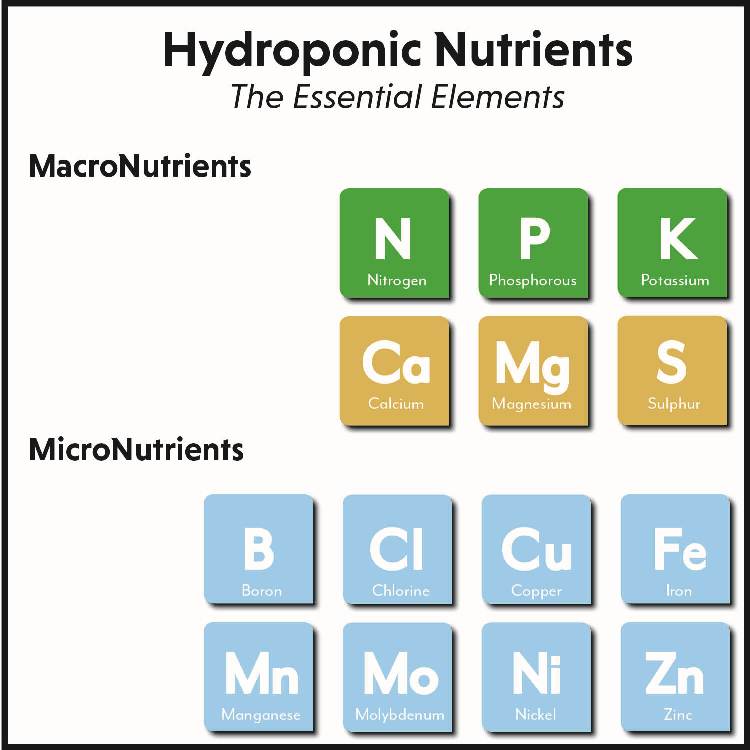
2. Plants' Essential Nutrients for Optimal Growth
How to Guide: Plants' Essential Nutrients for Optimal Growth
Growing healthy and vibrant plants in a hydroponic system is a rewarding experience, and understanding the essential nutrients your plants need is crucial to their success. In this guide, we will cover the essential nutrients required by plants for optimal growth.
1. The Importance of Oxygen, Carbon, Hydrogen, and Nitrogen: These four elements are essential for plant survival, as they are responsible for respiration, hydration, and photosynthesis. Plants obtain Oxygen, Carbon, and Hydrogen from air and water, while Nitrogen is absorbed through their roots. Ensuring that plants have access to these elements is vital for their healthy growth.
2. Nitrogen: This key nutrient promotes vegetative growth in plants and is responsible for the formation of chlorophyll, amino acids, co-enzymes, and proteins. Nitrogen deficiency results in yellow leaves and slower growth. However, excessive nitrogen can hinder the plant's ability to bear fruits and flowers.
3. Phosphorus: This essential nutrient plays a crucial role in the formation of DNA, tissue formation, and cell division. During the early phases of seedling germination and flowering stage, plants require phosphorus in large amounts. Deficiency of phosphorus can lead to stunted growth and weak leaves, flowers, and roots.
4. Potassium: This nutrient doesn't form compounds in plants, but it helps stimulate essential processes such as photosynthesis, starch formation, protein synthesis, and enzyme activation. Plants in need of potassium usually show yellow leaves initially. Excessive potassium, similar to phosphorus, can prevent the absorption of other essential elements.
Understanding these essential nutrients and their respective roles in plant growth is key to providing a balanced nutrient solution to your hydroponic system. This, in turn, will help you achieve the best results and ensure that your plants remain healthy and thriving. [3][4]
:max_bytes(150000):strip_icc()/hydroponic-nutrient-solution-basics-1939228-hero-baea6e3ce7b443159da0db779258f98d.jpg)
3. The Importance of Oxygen, Carbon, Hydrogen, and Nitrogen
How To Guide: The Importance of Oxygen, Carbon, Hydrogen, and Nitrogen in Hydroponic Nutrient Solutions
1. Know the essential elements: - Oxygen (O), Carbon (C), Hydrogen (H), and Nitrogen (N) are the elements plants need to survive and grow. - They are in air and water, and plants take them from the environment.
2. Understand their functions: - Oxygen, Carbon, and Hydrogen facilitate respiration, moisture retention, and photosynthesis in plants. - Nitrogen is essential for vegetative growth, chlorophyll production, amino acids, and protein synthesis.
3. Focus on high priority nutrients: - Nitrogen: The most important nutrient for vegetative growth, leaf and stem development, and maintaining plant color. - Phosphorus: Essential for DNA synthesis, cell division, healthy roots, and flower development. - Potassium: Crucial for photosynthesis, starch formation, protein synthesis, and enzyme activation.
4. Check for nutrient deficiency symptoms: - Nitrogen deficiency: Yellow leaves, stunted growth, and weak stems. - Phosphorus deficiency: Slow growth, weak leaves, and underdeveloped roots and flowers. - Potassium deficiency: Yellow leaves, poor fruit quality, and weak root systems.
5. Avoid nutrient overloading: - Excess Nitrogen: Lush green foliage, but reduced fruiting and flowering capacity. - Excess Phosphorus: Hindered absorption of other essential nutrients like calcium, iron, and magnesium. - Excess Potassium: Imbalanced nutrient availability, increased susceptibility to pests and diseases.
6. Optimal pH levels: - Maintain a pH range of 5.0-7.0 for hydroponic vegetable growth.
7. Customize nutrient solutions: - Different plants have unique nutrient requirements; tailor nutrient solutions accordingly.
With this guide, you can manage the essential elements of Oxygen, Carbon, Hydrogen, and Nitrogen in your hydroponic nutrient solutions. Ensure your plants receive their crucial nutrients and thrive. [5][6]
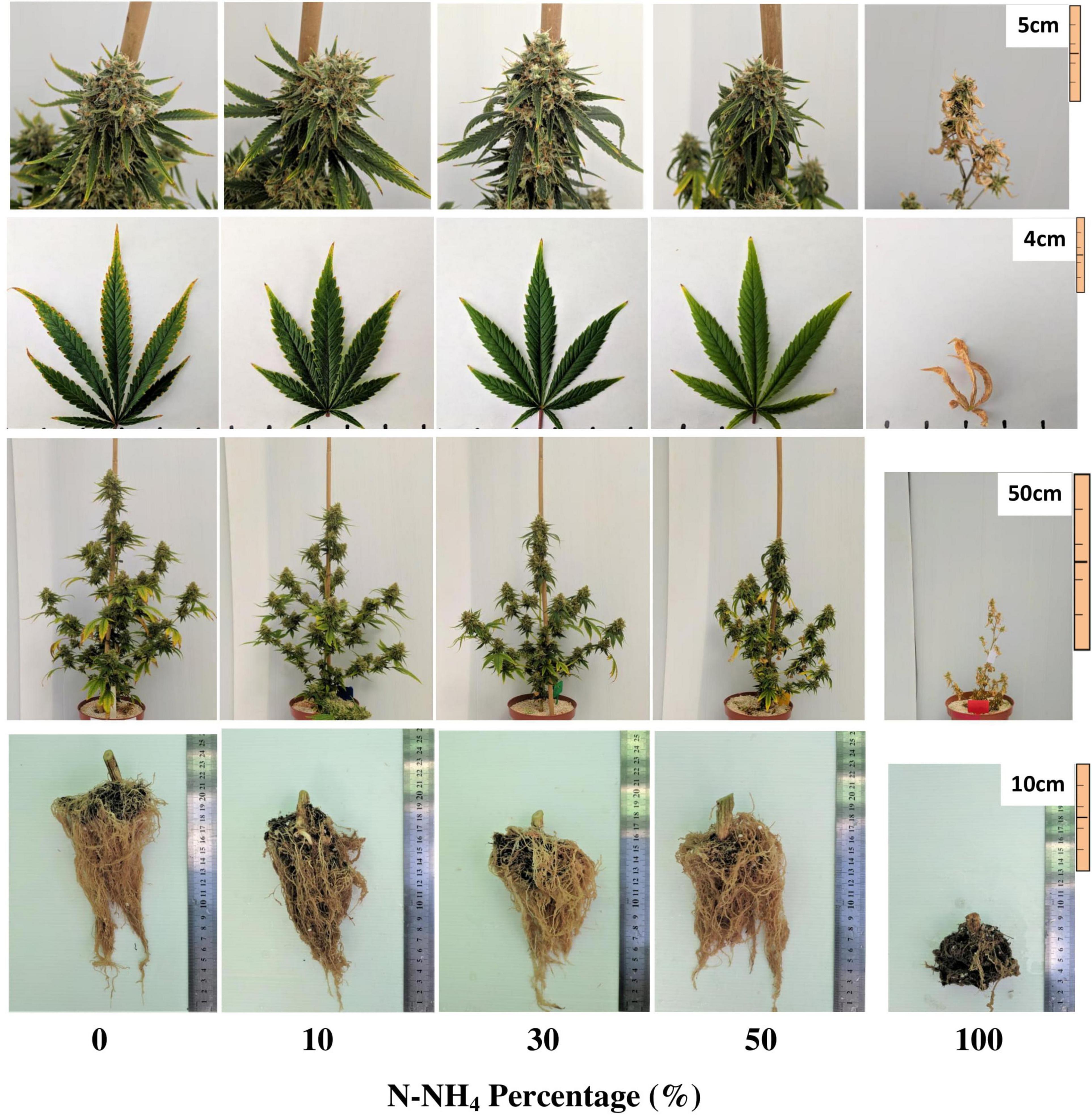
4. Nitrogen: The Key Nutrient for Vegetative Growth
**Understanding Nitrogen for Vegetative Growth in Hydroponics**
1. Importance of Nitrogen in Hydroponic Systems - Nitrogen is essential for plant growth and development. - Key component in amino acids, proteins, and other plant molecules. - Crucial for photosynthesis, energy transfer, and chlorophyll production.
2. Types of Nitrogen in Hydroponics - Ammonium (NH4+): Not commonly used in hydroponics, can cause pH imbalances. - Nitrate (NO3-): The preferred form, allows for better storage and growth.
3. Balancing Nitrogen Forms - Research suggests that plants perform better when provided with a combination of both ammonium and nitrate forms of nitrogen.
4. How to Add Nitrogen to Your System - Use specific nutrient solutions for your crop and adjust according to the crop's growth stage. - Constantly monitor pH levels, keep in the optimal range of 5.0 to 7.0. - Check nitrate tissue levels to ensure compliance with food safety limits.
5. Tips for Successful Nitrogen Management - Select the appropriate nutrient solution tailored to your crop. - Monitor and adjust pH levels throughout the growth cycle. - Make proper adjustments across the crop cycle for optimal yield.
6. Getting Help - Reach out to experts like Hort Americas for guidance in selecting nutrient solutions and managing the crop cycle for a successful hydroponic venture. [7][8]
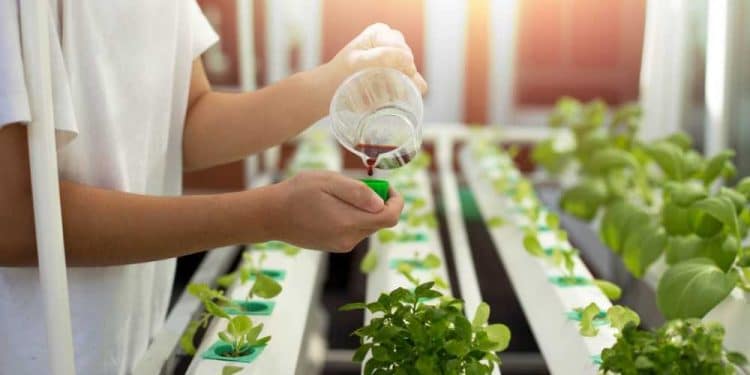
5. The Critical Role of Phosphorus in Plant Development
The Critical Role of Phosphorus in Plant Development: A How-To Guide
Understanding the importance of phosphorus in hydroponic systems is crucial for healthy plant growth and development. Let's explore how to ensure your plants are getting the right amount of phosphorus for optimal growth.
1. Recognize the role of phosphorus: - Phosphorus is essential for stem, root, flower, and seed development. - It is necessary for the synthesis of DNA, RNA and the energy storage molecule in plant cells.
2. Signs of phosphorus deficiency: - Weak stems - Slow leaf and root growth - Malformed or underdeveloped seeds
3. Ensuring adequate phosphorus levels: - Choose a well-balanced hydroponic nutrient solution containing phosphorus - Regularly measure and monitor the electrical conductivity (EC) of nutrient solutions
4. Tips for optimal phosphorus absorption: - Maintain an ideal pH range of 5.0 to 7.0 in your hydroponic system - Beware of overdoing it with phosphorus, as excess amounts can lead to nutrient lockout, preventing plants from absorbing other essential nutrients
In summary, phosphorus plays a critical role in plant development, and it is vital to ensure your hydroponic plants receive adequate levels for healthy growth. By monitoring nutrient solutions and maintaining proper pH levels, you can optimize the uptake of phosphorus and support your plants' development. [9][10]

6. Potassium: Crucial for Photosynthesis and Starch Formation
Potassium: Crucial for Photosynthesis and Starch Formation
Potassium plays a vital role in the overall growth and development of plants. Here's a guide on the importance of potassium and how it contributes to various plant physiological processes:
1. Role in Photosynthesis: - Potassium helps in the regulation of plants' response to light by opening and closing stomata, which in turn regulates the uptake of carbon dioxide, leading to enhanced photosynthesis.
2. Starch and Protein Synthesis: - It assists in the formation of starch and facilitates protein synthesis in plants, contributing to overall growth and development.
3. Nutrient and Water Transportation: - Potassium aids in the trans-location of essential nutrients, water, and other substances from roots to other parts of the plant.
Recognizing and Addressing Potassium Deficiency:
Some common symptoms of potassium deficiency in plants include: - Yellowing leaves: The edges of leaves may turn yellow, and defoliation may occur. - Slow growth: Poorly developed roots and stems. - Loss of tolerance to temperature changes: Reduced potassium availability may make plants more susceptible to temperature fluctuations.
How to address potassium deficiency: - Use potassium-rich fertilizers, such as potash (KOH), sylvite (KCl), Carnallite, and Langbeinite, to increase its availability for plants. - In hydroponic systems, make sure the pH levels are between 5.0 to 7.0, which is optimal for nutrient availability, including potassium.
To summarize, understanding the role of potassium in photosynthesis and starch formation is essential for ensuring the healthy growth of plants. Keep an eye out for deficiency symptoms and take appropriate measures to balance the potassium levels in your garden or hydroponic system. [11][12]

7. Macronutrients vs Micronutrients
Understanding Hydroponic Nutrient Solutions: Macronutrients vs Micronutrients
To provide the best environment for plant growth in hydroponic systems, it's essential to understand the difference between macronutrients and micronutrients. Here's a quick guide on how to differentiate them and ensure your plants get the right balance of nutrients:
1. Macronutrients: - Required in larger amounts for plant growth - Include carbon, hydrogen, oxygen, nitrogen, phosphorus, potassium, sulfur, calcium, and magnesium - Obtained from air, water, and nutrient solutions
2. Micronutrients: - Required in smaller amounts but still essential for plant growth - Include iron, manganese, zinc, boron, molybdenum, chlorine, copper, and nickel - Obtained from nutrient solutions and aggregate media
To ensure proper nutrient balance, follow these steps:
1. Research the specific nutrient requirements of the plants in your hydroponic system and group them based on their pH and nutrient needs
2. Regularly check the pH levels of your nutrient solution, aiming for a range of 5.0 to 7.0 for optimal nutrient absorption
3. Monitor the temperature of your nutrient solution, keeping it between 70 to 78 degrees Fahrenheit
4. Choose between premade nutrient solutions or creating your own: - Premade solutions are best for small-scale growers while mixing your solution is beneficial for larger quantities - Premixed concentrates come in separate bottles for macro and micronutrients, while some single solutions use chemical complexes to keep incompatible nutrients from mixing
5. Utilize twin- or triple-pack solutions for an easy-to-mix and efficient nutrient supply for your hydroponic plants. [13][14]
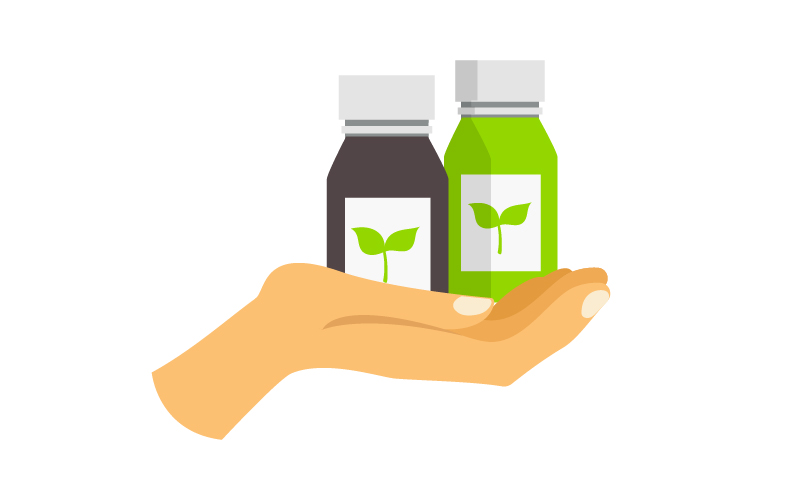
What's the Difference? Hydroponic Nutrient
What's the Difference? Understanding Premade vs DIY Nutrient Solutions
When it comes to hydroponic nutrient solutions, deciding between premade and DIY options appears overwhelming. Here are some key differences to help you decide which is the best fit for your needs:
- Convenience: Premade nutrient solutions require minimal effort as they come with specific instructions and proportions. These ready-to-use solutions save time and effort, making them ideal for beginners or those with limited time.
- Customization: DIY nutrient solutions offer greater control over the nutrient blend, allowing you to tailor it to your specific plant needs and growth stages. Advanced gardeners often prefer this option, as it allows for experimentation and fine-tuning of formulas to maximize yields.
- Cost: DIY nutrient solutions tend to be more cost-effective in the long run as compared to premade solutions. Purchasing raw ingredients in bulk can lead to considerable savings. However, upfront costs may be higher as additional equipment (e.g., scales, containers) is required.
- Consistency: Premade nutrient solutions maintain consistency as they are manufactured under strict quality control, ensuring the nutrients are well-balanced and appropriate for the user's requirements. DIY solutions rely on your expertise, making consistency more challenging to achieve.
In summary: 1. Choose premade nutrient solutions for a convenient, stress-free experience with consistent results. 2. Opt for DIY nutrient solutions if you seek greater control, customization and potential cost savings. 3. Regardless of your choice, regularly monitoring the pH and electrical conductivity in your nutrient solution is crucial for optimal plant growth and health. [15][16]
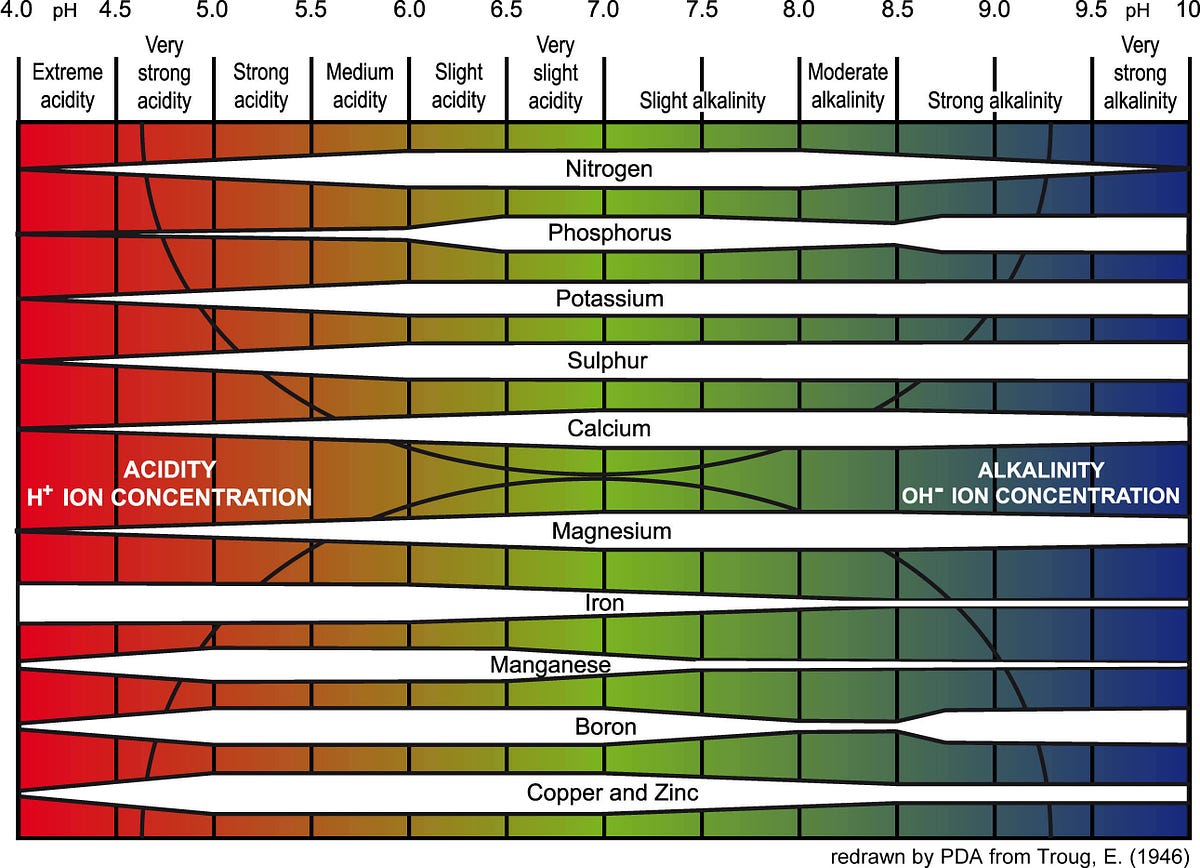
8. Checking pH Levels in Nutrient Solutions
Checking pH Levels in Nutrient Solutions: A How-to Guide
When it comes to hydroponic nutrient solutions, maintaining the right pH level is crucial for ensuring plants can properly absorb essential nutrients. Follow these steps to check and adjust the pH levels in your hydroponic system:
1. Get the right equipment: - A reliable pH tester, such as a digital pH meter, is essential for accurate measurements. - pH adjusting solutions (pH up and pH down) are used to adjust the pH levels as needed.
2. Test the pH level: - Before testing, ensure your pH meter is calibrated according to the manufacturer's instructions. - Dip the pH meter into the nutrient solution and wait for the reading to stabilize. - A pH level between 5.5 and 6.5 is considered ideal for most hydroponic systems.
3. Adjust pH as needed: - If the pH level is too low (acidic), add a small amount of "pH up" solution and retest. - If the pH level is too high (alkaline), add a small amount of "pH down" solution and retest. - Continue this process until the desired pH level is reached.
4. Monitor pH regularly: - pH levels can fluctuate over time, so frequent testing is important to maintain ideal levels.
5. Understand your plants' specific needs: - Different plants have different nutrient requirements and optimal pH levels, so tailor your pH maintenance to the specific needs of your plants.
Remember, maintaining a stable pH level is critical to the success of your hydroponic system. By regularly monitoring and adjusting your nutrient solution, you can ensure optimal nutrient absorption and plant growth. [17][18]
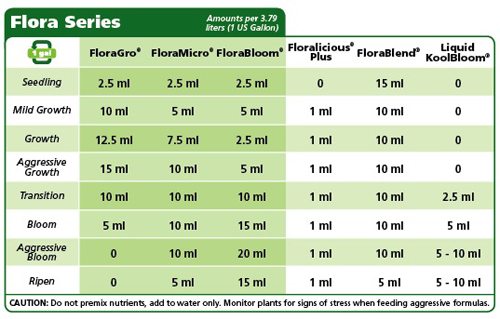
9. Formulating Your Own Nutrient Solutions
Formulating Your Own Hydroponic Nutrient Solutions: A How-To Guide
Creating a tailor-made hydroponic nutrient solution may seem daunting at first, but with some practice and basic knowledge, you'll soon be able to provide your plants the right nutrients for optimal growth. Here's a step-by-step guide on how to formulate your own hydroponic nutrient solutions:
1. Gather the essentials: - pH tester and adjustment set - Electric EC meter - Measuring cup or cylinder - Accurate weighing scales - Mixing cups or containers - Solutions for pH adjustment (potassium hydroxide or phosphoric acid).
2. Understand your plants' nutrient needs: - Macronutrients (needed in larger quantities): Nitrogen, Phosphorus, and Potassium. - Micronutrients (needed in smaller quantities): Iron, Manganese, Zinc, Copper, Boron, and Molybdenum.
3. Choose a hydroponic nutrient solution recipe based on your plants' requirements and adjust the nutrient levels accordingly.
4. Follow these steps to create your nutrient solution: a. Measure the ingredients using precise weighing scales. b. Add the substances to a mixing container. c. Adjust pH levels with pH Up or pH Down solutions; target pH should be between 5.5 and 6.5. d. Use an electric EC meter to measure the solution's electrical conductivity and ensure it's within the optimal range for your specific plants.
5. Monitor your plants' health and adjust the nutrient solution as needed. Watch for signs of nutrient deficiency or excess and make the necessary changes to the formulation.
By creating your own hydroponic nutrient solutions, you'll gain valuable understanding of your plants' specific needs, and be able to optimize your growing conditions for healthier, more productive plants. Happy gardening! [19][20]

10. Benefits of Premade vs DIY Nutrient Solutions.
Understanding Hydroponic Nutrient Solutions: Benefits of Premade vs DIY Nutrient Solutions
Hydroponic nutrient solutions are essential for plant growth in hydroponic systems. Choosing between premade and DIY nutrient solutions depends on your needs as a gardener, the plants you're growing, and the level of control you desire. Here are some benefits of each option:
Premade Nutrient Solutions: 1. Ease of use: Premade solutions are ready to mix and can save time and effort, making them ideal for small-scale setups and hobbyists. 2. Consistency: With premade solutions, you can expect a consistent formula and quality. 3. Compatibility: Premixed concentrates often come with separate bottles for macronutrients and micronutrients to avoid precipitation and ensure compatibility.
DIY Nutrient Solutions: 1. Customization: Mixing your nutrient solutions allows you to tailor the formula specifically to your plants' needs and adjust it as necessary. 2. Cost-effective: For large-scale hydroponic setups, buying bulk concentrates and mixing them yourself can be more economical. 3. Adaptability: DIY solutions enable you to adjust the pH and nutrient concentration for multiple plant types or changing environmental conditions.
When deciding on the best nutrient solution approach for your hydroponic system, consider the following: - Research the nutrient requirements of your plants and group them according to their pH needs - Keep nutrient solutions at a consistent temperature (70-78°F) for optimal absorption - Monitor pH regularly to ensure proper nutrient availability for your plants
By understanding the benefits of premade and DIY nutrient solutions, you can make an informed decision to optimize your hydroponic system and enhance plant growth. [21][22]
No comments:
Post a Comment